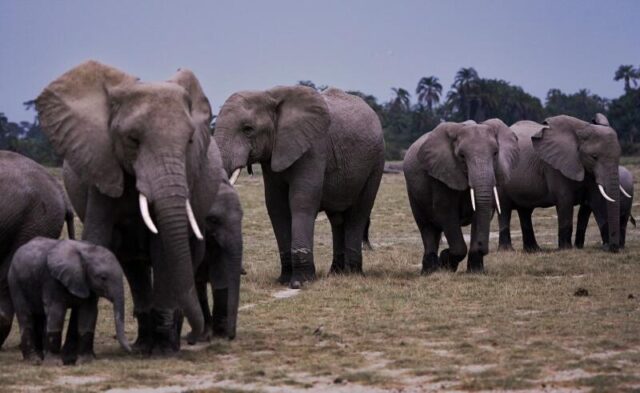The African elephant population has declined by 30% in less than a decade. To prevent further decline, large-scale conservation efforts are urgently needed.
CONSERVATION and the sustainable use of biodiversity are pivotal components of social, economic, and environmental development. Sustainable Development Goal 15 (SDG 15) underscores the importance of protecting terrestrial ecosystems, reversing land degradation, and halting biodiversity loss.
In the context of Southern and East Africa, one remarkable opportunity stands out: safeguarding Africa’s bush elephants, the largest land animals on Earth. Elephants, as a keystone species, play a crucial role in maintaining biodiversity and promoting healthy ecosystems.
Elephants, often regarded as ecosystem engineers, contribute significantly to Africa’s biodiversity and ecosystem health. Their actions, such as dispersing seeds through dung, maintaining grasslands by consuming vegetation and creating pathways for other animals, shape the landscape.
These gentle giants also store and sequester carbon, making them essential in mitigating climate change. Elephants also serve as magnets for tourism, a key economic driver for indigenous peoples and local communities in Southern and East Africa.
However, these magnificent creatures face numerous challenges, including habitat fragmentation, poaching, human-wildlife conflicts, and erratic weather patterns linked to climate change.
Alarmingly, the African elephant population has declined by 30% in less than a decade, as reported by the great elephant census conducted between 2013 and 2016. To prevent further decline, large-scale conservation efforts are urgently needed.
One beacon of hope lies in large-scale connectivity, a strategy aimed at enabling wildlife, including elephants, to move freely across countries, borders, and away from human-dominated areas.
Large, connected habitats offer resilience to environmental changes and reduce conflicts between wildlife and local communities. Achieving this connectivity can foster better human-wildlife coexistence and preserve healthy habitats.
One striking example of successful connectivity efforts is the Kavango-Zambezi Transfrontier Conservation Area (KAZA TFCA), an expansive region in Southern Africa spanning five countries, roughly the size of France.
Recent surveys within the KAZA TFCA revealed stable elephant populations, despite severe droughts and ongoing poaching. These results demonstrate the efficacy of large TFCAs in elephant conservation.
The potential for a more extensive TFCA encompassing South-east and East Africa, from Namibia to Kenya, could be groundbreaking. Such a megaproject, based on two decades of scientific research by the University of Pretoria’s Conservation Ecology Research Unit, could have a profound impact on biodiversity, climate, and communities.
For this vision to become a reality, leaders from six countries – Zimbabwe, Mozambique, Zambia, Malawi, Tanzania, and Kenya – must unite around a shared vision for wildlife conservation, tourism development and community well-being.
Building a strong foundation for this politically complex process is crucial. Communities and the broader population need to recognise the shared value of natural resources that cross state boundaries and their potential to contribute significantly to socio-economic development.
Carefully planned wildlife corridors can mitigate human-wildlife conflicts and benefit both biodiversity conservation and community growth.








